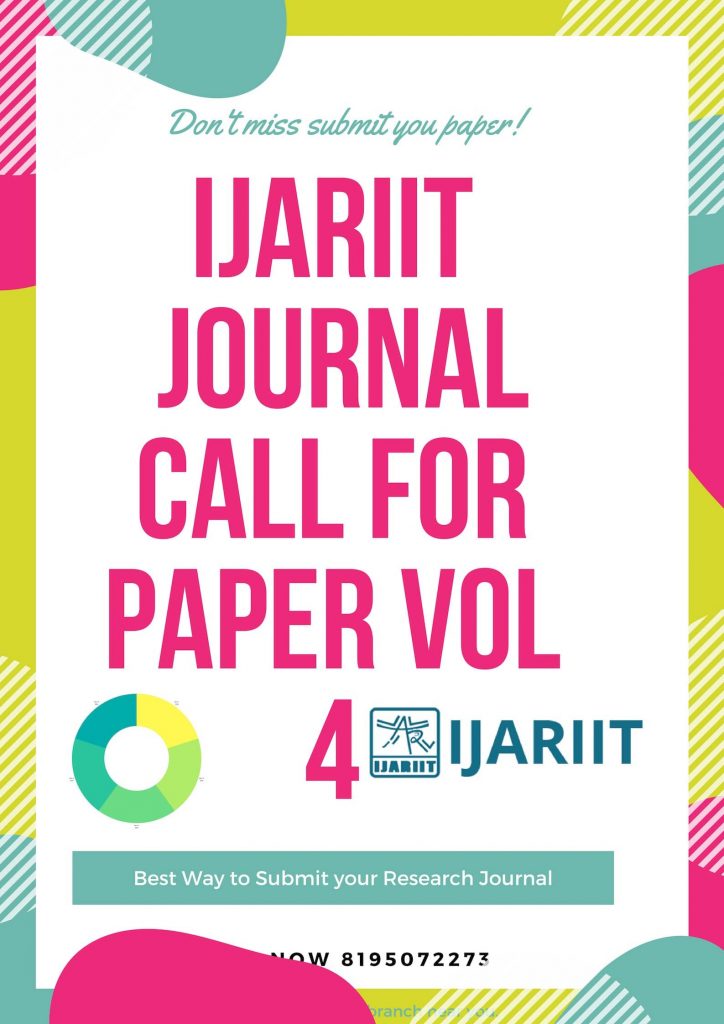Volume-10, Issue-3
May-June, 2024
1. Hybrid Approach Involving Deep Learning Techniques for Recognition Facial Emotions Efficiently
Published by: Nayak Himanshukumar Dinanath, Dr. Ashish SarvaiyaResearch Area: Deep Learning, Facial Expression Recognition
Organisation: Gujarat Technological University, Ahmedabad, GujaratKeywords: Deep Learning, CNN, FERC, AI and SSD
2. The Impact of Artificial Intelligence on Business Growth: A Comprehensive Analysis
Published by: Manhar ShankarResearch Area: Computer Science
Organisation: Scottish High International School, Gurugram, HaryanaKeywords: Artificial Intelligence, Business Growth, Automation, Data Analysis, Innovation
3. Intelligent navigation through recommended floor plans
Published by: Ananya Babu, Jawhara Fathima, Khrithikesh M U, Dr. Elizabeth IsaacResearch Area: Data Science
Organisation: Mar Athanasius College of Engineering, Kothamangalam, KeralaKeywords: Floorplan Recommendation, Autonomous Navigation
4. Centralized street light monitoring system using IoT
Published by: Suriya. A, Vetri. J, S. ChanthiniResearch Area: IoT
Organisation: IFET Collage of Engineering, Gangarampalaiyam, Tamil NaduKeywords: Street Light, Real-world Problem, IoT
5. News Data Classification using Natural Language Processing and Large Language Models
Published by: Prabhanjay Singh, Gurpreet KourResearch Area: Computer Science Engineering
Organisation: SRM Institute of Science and Technology, Ghaziabad, Uttar PradeshKeywords: News Classification, Natural Language Processing, Large Language Models, Machine Learning, Text Classification
6. Probe Method for Stock Price Prediction using Machine Learning Techniques
Published by: Parnandi Srinu Vasarao, MIDHUN CHAKKARAVARTHYResearch Area: Data Science
Organisation: Lincoln University College,MalaysiaKeywords: Forecast, Patterns, Supervised, Economic, Finance, Features, Relationship, Trends
7. The Cognizance of Implant Abutments selection: A Review
Published by: Dr. Rajat Chaudhari, Dr. Kishor Mahale, Dr. Smita Khalikar, Dr. Vilas Rajguru, Dr. Sonali Mahajan, Dr. Ulhas TandaleResearch Area: Prosthetic Dentistry
Organisation: Government Dental College and Hospital, Aurangabad, MaharashtraKeywords: Dental implants, Abutment, Abutment connection, Implant Abutment
8. What are Quantum Computers and Why do we Need them?
Published by: Aarnav ChhikaraResearch Area: Quantum Computers
Organisation: The British School, New Delhi, IndiaKeywords: Quantum, Quantum Computing, Probability, Possibility, Sycamore, Application, Shor’s algorithm, Classical computers, Data, Cyber Security, Quantum mechanics, Superposition, Quantum entanglement, Quantum Tunneling, AI, Business
9. Exploring the Gender Pay Gap in India: Assessing its Implications on Economic Growth and Development
Published by: Punnya SethiResearch Area: Economics. Gender Studies
Organisation: Pathways School Gurgaon Faridabad - Gurgaon Rd, Baliawas, Gurugram, Bandhwari, Haryana, IndiaKeywords: Gender Parity , Equality , Glass Ceiling, Indian Economy


